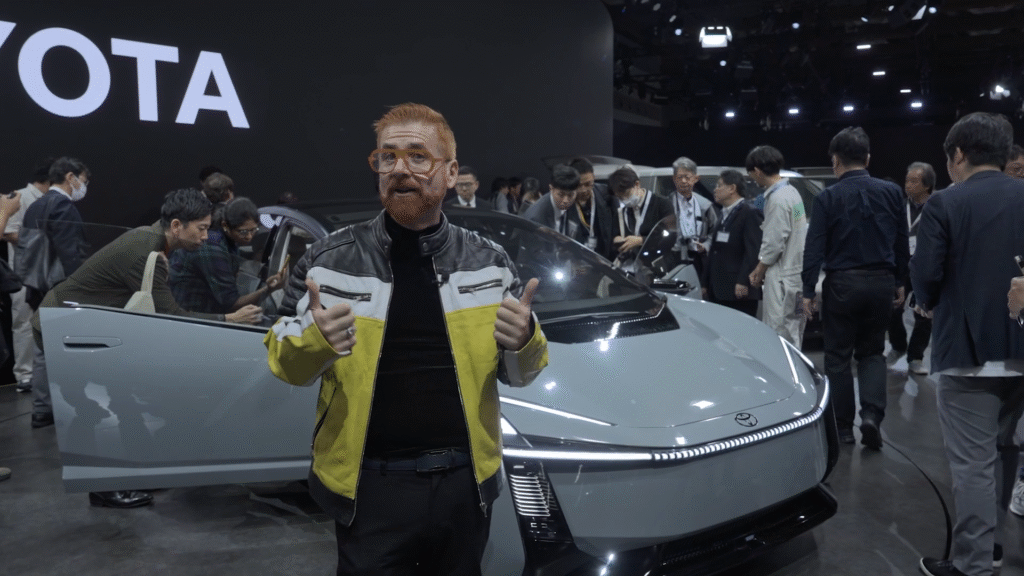Toyota’s Future Mobility Shift: From Walking Wheelchair to Corolla Concept

Mobility isn’t just about four wheels anymore. The industry is shifting to electrification, software-defined vehicles, and new forms of usage. Toyota’s walking-wheelchair concept (called “challenge me”) extends mobility beyond drivers into terrains and lives previously underserved. Meanwhile, the Corolla Concept signals that even Toyota’s bread-and-butter compact sedan is going multi-pathway hybrid and flexible architecture. These unveilings matter because they tell us Toyota sees the future as broader than SUV growth; it includes how humans move, assistive mobility, and smart integration.
The walking-wheelchair concept by Toyota shows the brand isn’t simply waiting for user needs; it’s shaping them. And the Corolla Concept shows the next Corolla generation will not just refine the existing formula but rethink architecture to support hybrid, BEV, and whatever tomorrow demands.
How does it compare to rivals?
Many automakers talk about “mobility,” “future,” “accessibility,” and “software-first,” but few present tangible non-car concepts alongside a mainstream sedan concept at the same show. Toyota’s walking wheelchair would compare (in intent) with mobility-aid devices unveiled by other OEMs or tech firms. Still, none are yet backed by a globally renowned carmaker with mainstream volume ambitions.
In the sedan arena, the Corolla segment sees competition from the Honda Civic, Mazda3, and compact crossovers. But Toyota’s approach, announcing a multi-pathway powertrain (including a hybrid) and a flexible architecture, puts it ahead in terms of strategic positioning. The walking-wheelchair concept also gives Toyota a broader mobility footprint than rivals focused purely on cars.
Of course, rivals like Honda and Hyundai have announced assistive-mobility or personal-mobility devices, and many luxury houses talk about smart chairs or AR interiors. But Toyota has scale, global manufacturing, and brand trust. That matters if you want not just a show-car but a real rollout.
Who is this for, and who should skip it?
For early adopters of mobility beyond the car, such as users needing terrain-capable personal mobility devices, fleet/last-mile operators exploring “small-scale logistics” tools, or compact-car buyers seeking the next Corolla, the announcements are meaningful. If you’re a Toyota buyer who wants reassurance that the next Corolla will evolve rather than stagnate, this matters.
If you’re strictly “I need a diesel pickup now” or a purist driver uninterested in modular mobility devices, then you might skip the walking-wheelchair concept for now; it’s not a car you buy next month. And if you’re only shopping for luxury electric sedans, the Corolla Concept might not satisfy your performance hunger. This is more about broad mobility and mass-market evolution than über-sports-car excitement.
What is the long-term significance?
These two reveals hint at how Toyota is positioning itself for the next decade: not just vehicle manufacturing, but mobility-ecosystem manufacturing. The walking-wheelchair concept reflects the “mobility for all” paradigm, moving beyond driver-only models and seeking to serve inclusive mobility. The Corolla Concept points to flexible vehicle architecture built for multiple powertrains and global markets, aligning with industry trends of software-first, electrification, and platform sharing.
In a world where EV adoption is rising and software-defined vehicles are becoming standard, Toyota appears to be laying the groundwork for more than one type of mobility device. If the walking-wheelchair sees commercial rollout and the next Corolla hits with hybrid, BEV, and perhaps small-cell architectures, Toyota could claim both mainstream volume and next-gen‐mobility leadership.
For mainstream vehicle buyers, that means when the next Corolla arrives, you’re buying into a car built from a more future-proof platform. For people who need enhanced mobility, it means designers are thinking of you not as an afterthought, but as part of the mobility market. That shift is subtle but important. Mobility isn’t just a car. It’s movement, access, and equality.
In short, Toyota’s JMS 2025 showing wasn’t flashy for flashy’s sake. It reflected the strategic direction. If you care about vehicle design, mobility, and how our automotive world is evolving, these two pieces merit attention.






